|
|

|
|
|
   
|

|
REPAIR of a DAMAGED KOLIBRI |
 |
Kolibri #3 Repair
I purchased this boat July 31, 2007 and was puzzled that the dagger, rudder and sails looked like new, yet the boat had been completely redone. A closer inspection showed that the boat had obviously been stored outside without protection and had also been damaged. One of the previous owners, who was definitely not an expert, repaired the boat in several places with Bondo and repainted it red and white. The paint job was decent, but it hid what was lurking under the surface!
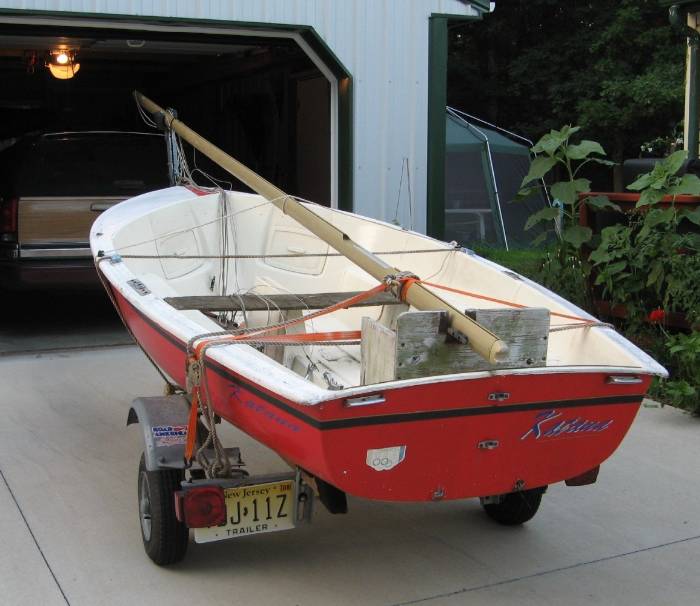
I made a new mahogany transom and seat and touched up the paint.
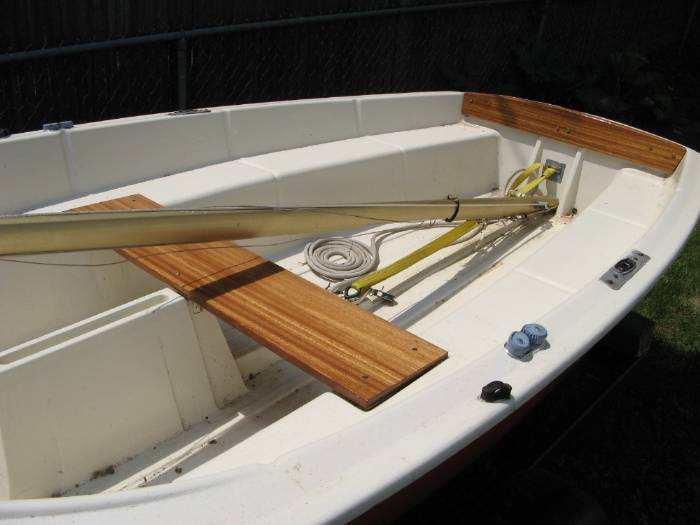
It was time to take my Kolibri for a trial sail!
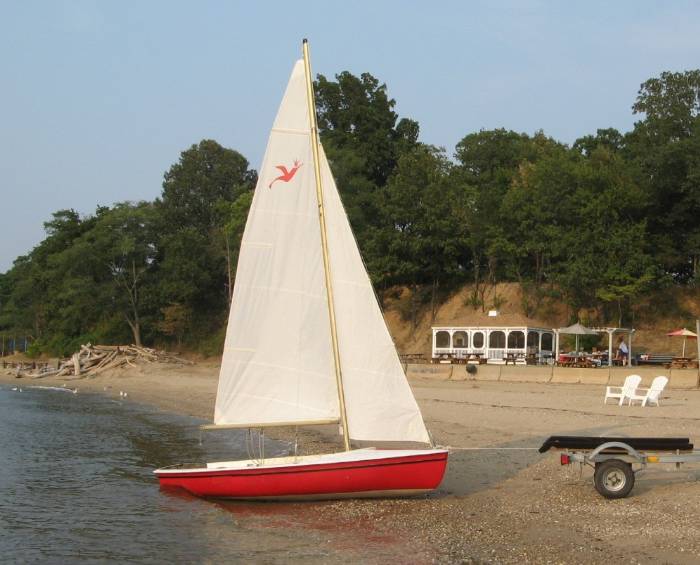
The first mishap was not long in coming. As already stated, the rudder and dagger looked new, but they were probably stored in a hot garage and the glue in the laminated tiller handle had deteriorated; the tiller literally fell apart in my hand! With much effort, I managed to handle the sails and steer the boat to shore without a tiller. That is not a simple task when the wind is blowing on the Chesepeake Bay!
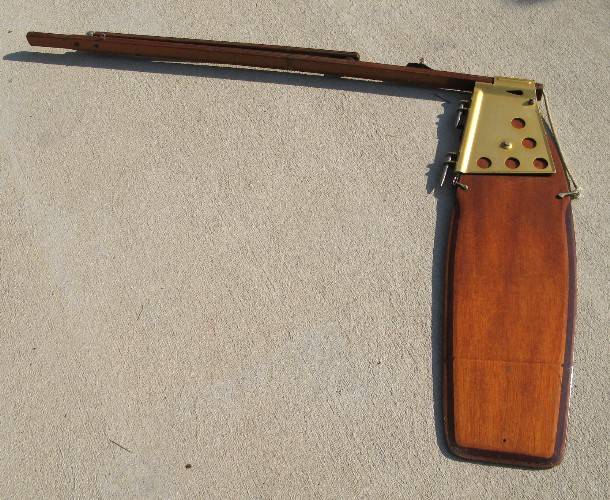
When I got home, I went to Harbor Freight and purchased two 4' aluminum clamps. I cut one in half and made two 2' clamps out of the pieces. The other aluminum piece became a new tiller. I used the Kolibri tiller extension.
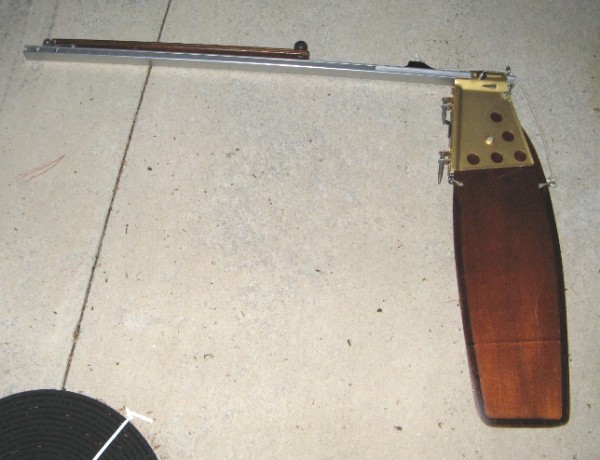
I was now ready for my next sailing adventure - so I thought! I towed the Kolibri to Union Lake and a brisk breeze promised some great sailing.

About 200 yards from shore, I heard a snapping noise and noticed a crack in the floor by the mast step. No water was coming in, but I decided to head for the ramp and investigate. I had no sooner tacked when there was a loud bang and the mast dropped through the bottom of the boat! Because the stays went slack, the mast fell sideways, ripping an even larger hole in the hull. A Kolibri has plenty of flotation, but I sat waist-deep in water, trying to paddle towards the ramp until a pair of fishermen with a motorboat came to my rescue.
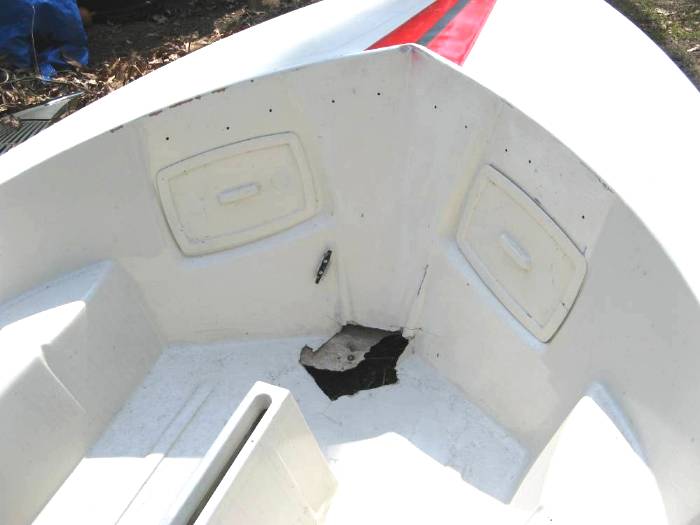
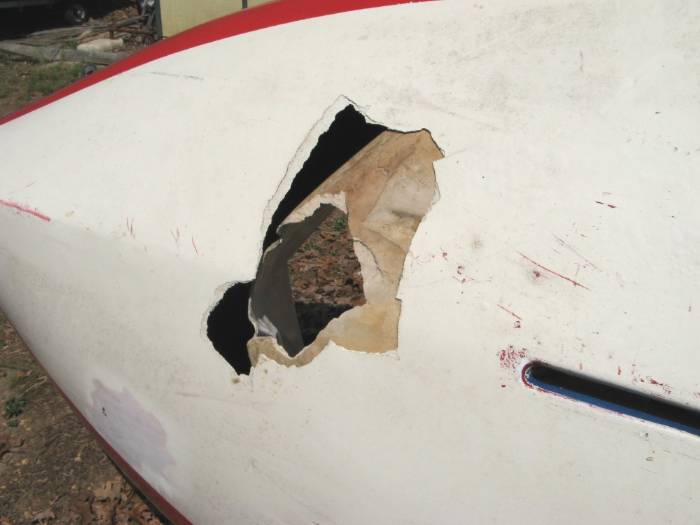
My wife and several other "experts" claimed that the boat was junk, but I insisted that I could fix it up as good as new again. I had saved several pieces of a Mutineer hull before hauling it to the landfill for just such an occasion.
I cut a piece of the laminated fiberglass a little larger than the hole and shoved it between the inner and outer hulls, sealing it into position with fibrous Bondo. Then I put three layers of fiberglass cloth and resin on top of the patch. After grinding and sanding it, I smoothed it over with Bondo and sanded it again.
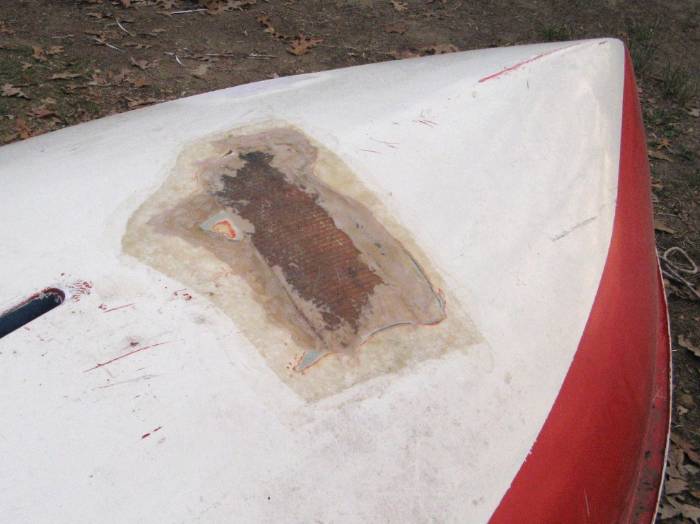
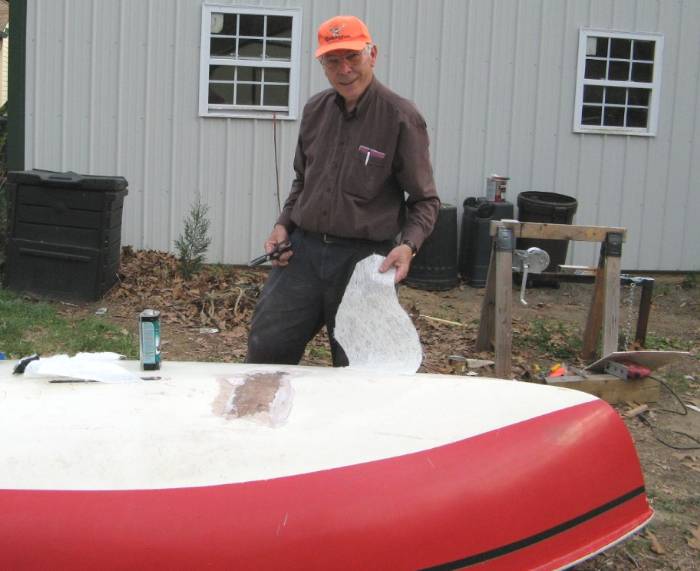
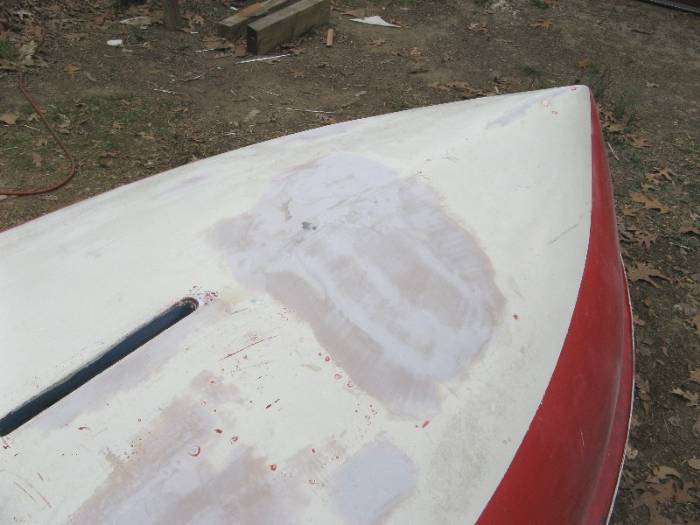
After turning the boat over, I began repairs on the inside. It is important that all smooth surfaces be roughed up with a sander or grinder to assure that the resin or Bondo adheres properly.
Since the mast step was lying at the bottom of the lake, I had to guess how high the new step should be. The stays must fit in order for the sails to fit properly. The boom is adjustable, but the jib dare not be too high or low. Because the floor would be higher, the mast step had to be a little lower to compensate. I made a guide to help me keep the fiberglass work neat.
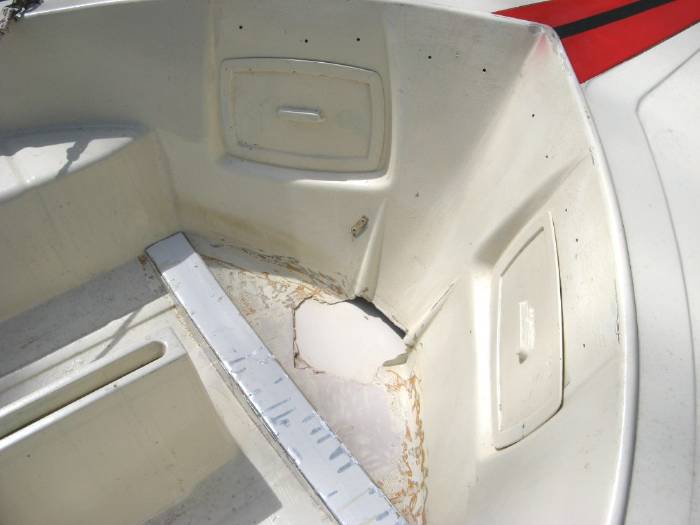
I then added several layers of fiberglass cloth and resin. Donor pieces from the Mutineer can be seen lying on the daggerboard shaft. These will provide a nice smooth finish in addition to giving strength.
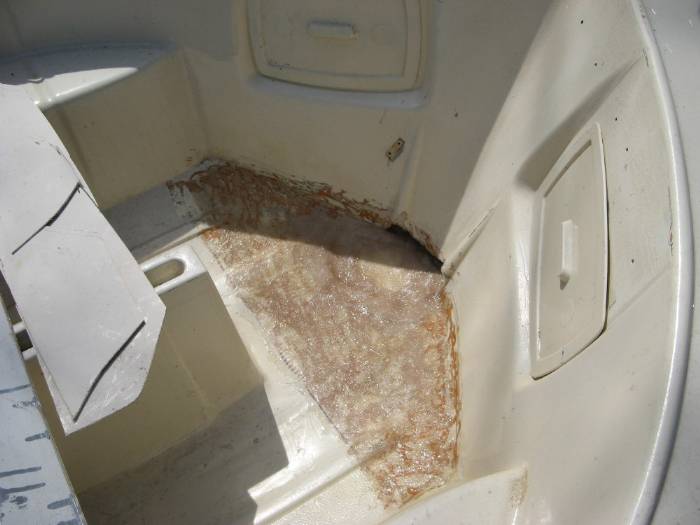
For the mast step, I used 1/2 inch PVC pipe filled with Bondo imbedded in the floor. I drilled two holes to sink the ends so that the step would not be too high, yet strong enough to support the weight of the mast.
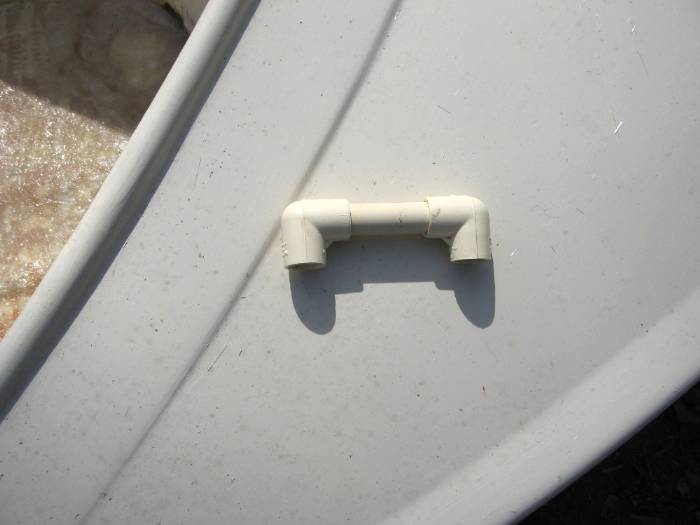
A smaller sheet is pasted down with Bondo and then a second layer on top of that. In the end, there are three layers of Mutineer parts plus half a dozen layers of resin and cloth. The mast will never fall through that floor!
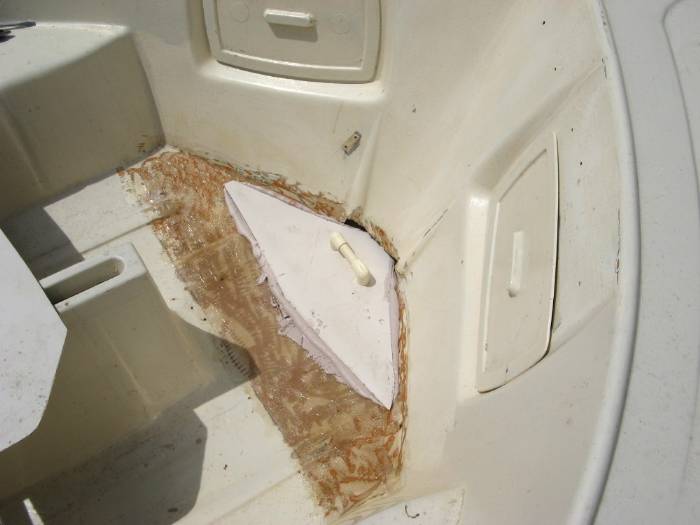
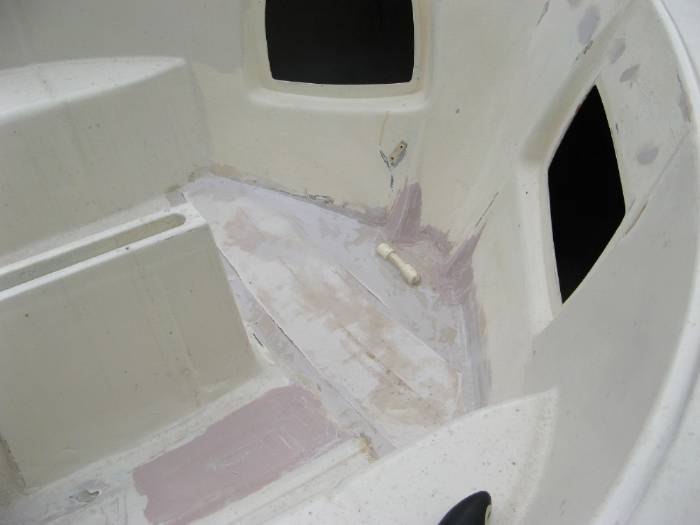
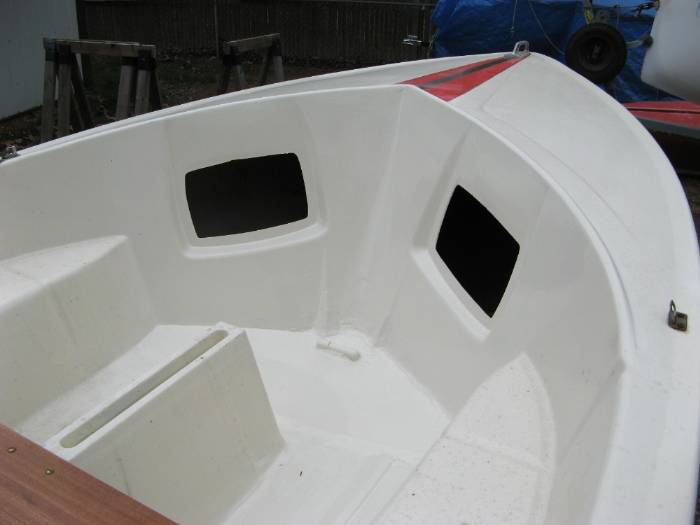
Since I had to paint the hull again, I repaired many small scratches first.
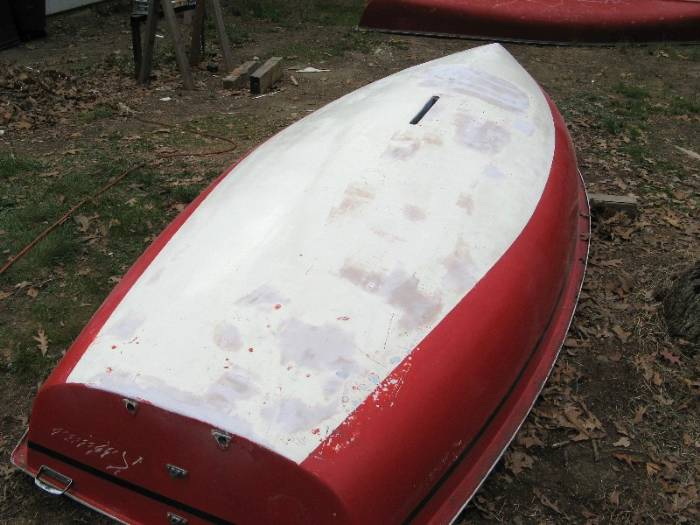
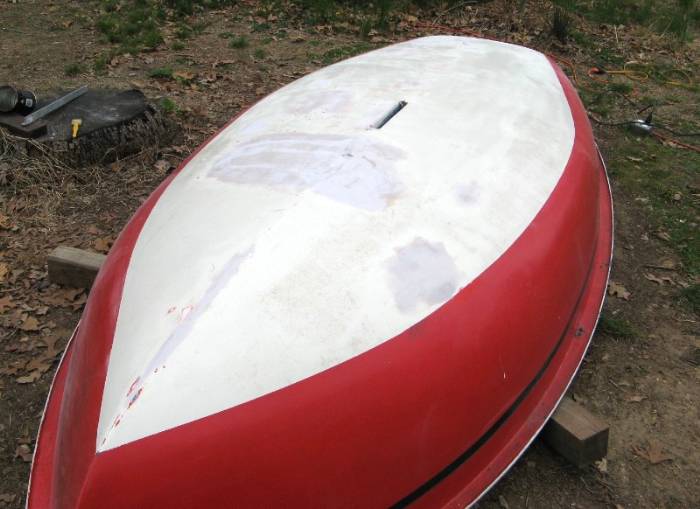
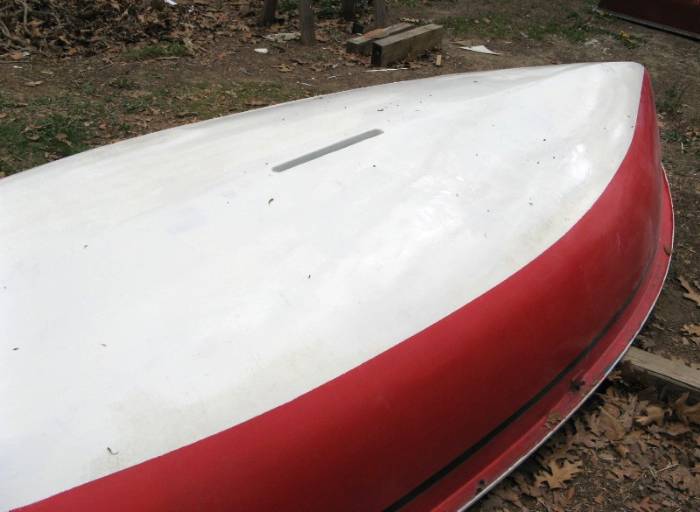
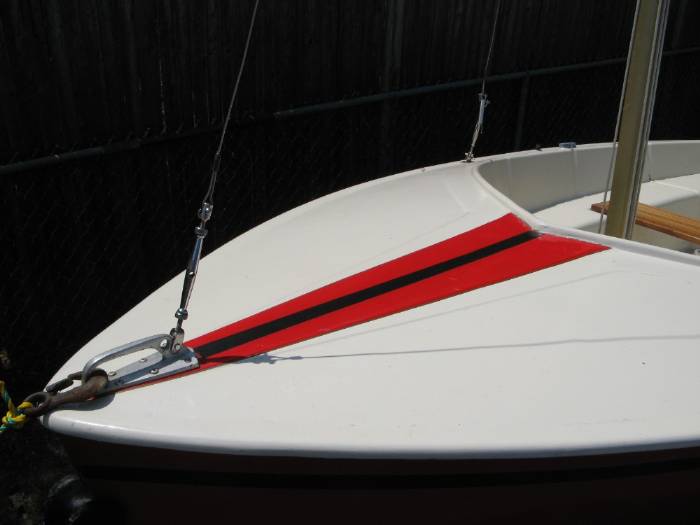
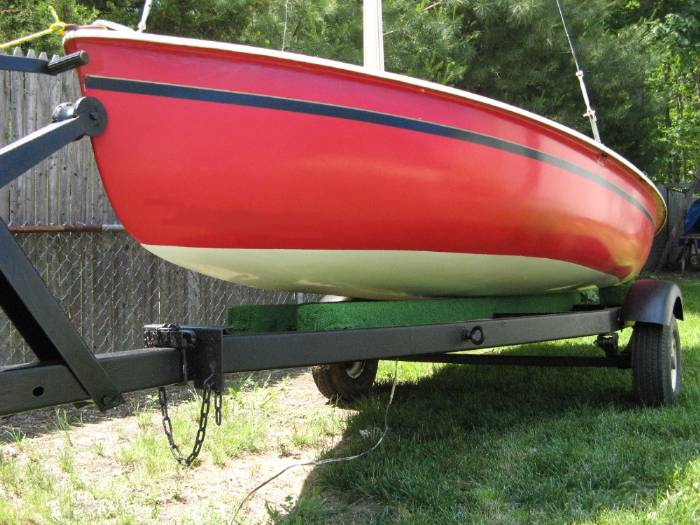
My Kolibri is better than new!
   
|
|
|